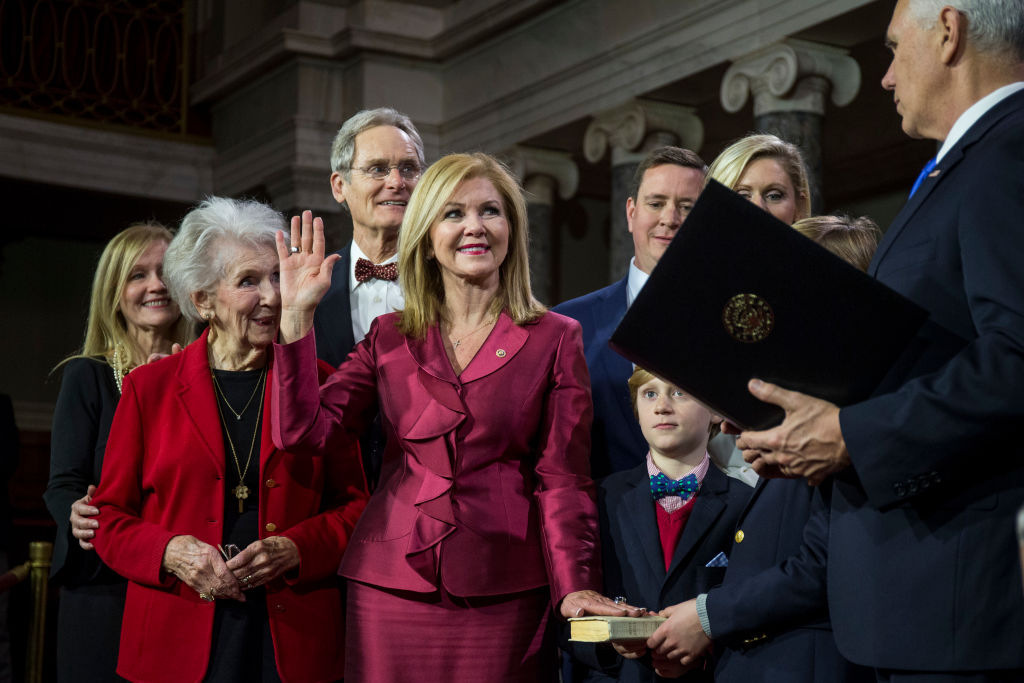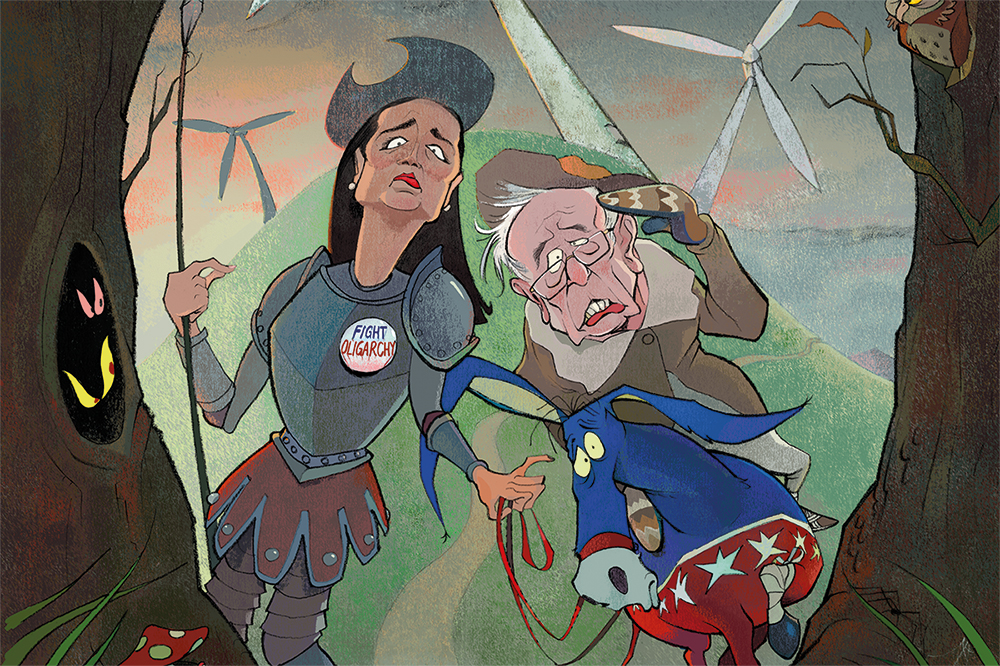When the new class of Congress officially began this month, the Democrats dominated the airwaves — perhaps for the first time in the Trump era. The Democratic rainbow coalition of women were front and center of the public conversation. Many of these freshman congresswomen are young and come from diverse backgrounds.
Some of these women support wildly erratic forms of leftism, including socialism. But, despite the silly and dangerous ideas of incoming congresswomen such as Ilhan Omar, Alexandria Ocasio-Cortez and Rashida Tlaib, they are adored by the media.
Such naked identity politics might annoy conservatives, but there is no denying the logic: when the electorate is so diverse, having diverse politicians is effective. More than 50 percent of the American population is female, and so it should be clear: the Republican party desperately needs more women representatives. I’m not talking about succumbing to leftist ideology on sexism or diversity quotas. I’m talking political common sense.
The right has a healthy tradition of advancing women in politics. Britain’s first female Prime Minister, Margaret Thatcher, was a conservative, as is the the current Prime Minister Theresa May. In the US, Kellyanne Conway became the first woman to run a successful Presidential campaign in 2016, and many of the most prominent roles in the Trump cabinet are filled by women: look at Sarah Huckabee Sanders and Betsy DeVos. The first female governors of Hawaii, Iowa Massachusetts, New Jersey and Ohio, to name but a few, were Republicans. If GOP women can get elected at the state level and hold their own in the White House, why are there so few on Capitol Hill?
In 1989, 31 women were in Congress. 29 of these women served as United States representatives and two served as senators. Sixteen of these representatives were Democrats and 13 of these representatives were Republicans. Each party had one female senator.
Thirty years later, we have a record 127 women serving in Congress. Of them, 102 are United States representatives and 25 are senators. But, while 89 of these representatives are Democrats, stunningly the Republicans have only 13 female representatives, just as they did in 1989. There are currently 17 female Democrats and just eight female Republicans in the Senate.
Why have the Democratic women been able to steadily grow from representing 3.6 percent to 20.4 percent of the United States House of Representatives, while the Republicans remain at a mere 2.9 percent female representation in the House? Historically, Democrats have elected far more women than Republicans to Congress.
Is it because Democratic women are better funded than Republican women in congressional races? Could it be that prominent organizations like the left-leaning Emily’s List attract more donors and are more powerful than their right-leaning counterparts? What can the GOP do to counteract that?
Of course, the Republicans should always elect the best candidate for the job on a case by case basis, regardless of sex, race, gender, religion or other similar factors. For many years, our party has rejected the trappings of identity politics, and rightly so. But, when you step back and look at the numbers, isn’t it worth asking why more right-wing women aren’t finding themselves considered the best possible candidate?
We certainly don’t have a lack of excellent, accomplished women in the Republican party. Look at Sen, Marsha Blackburn, Rep. Liz Cheney and Sens. Collins and Murkowski, both who have served as critical voices in the United States Senate. The Republican side is not lacking a clear message of what we can accomplish to make the lives of the American people better. We are not lacking in ideas, values or patriotism.
But what we are lacking is in our ability to recruit and support more Republican women to run for office and in our ability to get behind our incredible Republican female candidates and help push them over the finish line. We are simply running too few female candidates and watching as those we do run get out-fundraised and beaten by Democrats with extreme ideas for the future of our nation.
In the 2018 midterms, 120 Republican women filed as candidates in House races and only 52 became the party’s nominee in the general election. Only 25 percent percent of these female Republican nominees went on to win their elections and become Congresswomen.
Meanwhile, 356 Democratic women filed as candidates and 183 of these women became their party’s nominee in the general election. Over 48 percent of these female Democratic nominees went on to win the general elections and become Congresswomen.
So, what are the Democrats doing better than us?
They don’t have better candidates. They don’t have better messages. They don’t have better policies. They don’t have better results to show to the American people. Yet, they are helping their female candidates run and win much more often than we are.
Of course, part of the reason the Democrats are running and funding more women for Congress is because they believe there are advantages to embracing box-ticking gender on their ballots. They think women should vote for women, Hispanics should vote for Hispanics, and so on. Of course, that is reductive. Women can and will vote for who they believe is best for the job, not just because a candidate shares a gender with them alone. However, there’s no denying that their identitarian approach has changed the rules of engagement in Washington. It’s become much easier for them to criticize the Republicans for being stuffy, old and white, meaning we spend more time discussing demographics when we should be debating policy. Electing more women is the best way for the GOP to sidestep this distraction and tackle rigid identity politics from a level footing: where ideas will win.
Many of the Democrats’ methods for increasing the number of female officials, such as quotas and all-female shortlists, would be unpalatable to the GOP. The solution is simpler and more practical: encourage and support experienced, successful Republican women to begin congressional bids.
We cannot lose sight in the value and importance of female Republican representation in Congress and how women in Washington could help us expand our base. We need to be more active in encouraging incredible, talented conservative women to run for office and in supporting the hard-working, Republican candidates.
Wake up, Republicans. You don’t have to embrace identity politics to support fabulous Republican women.

























